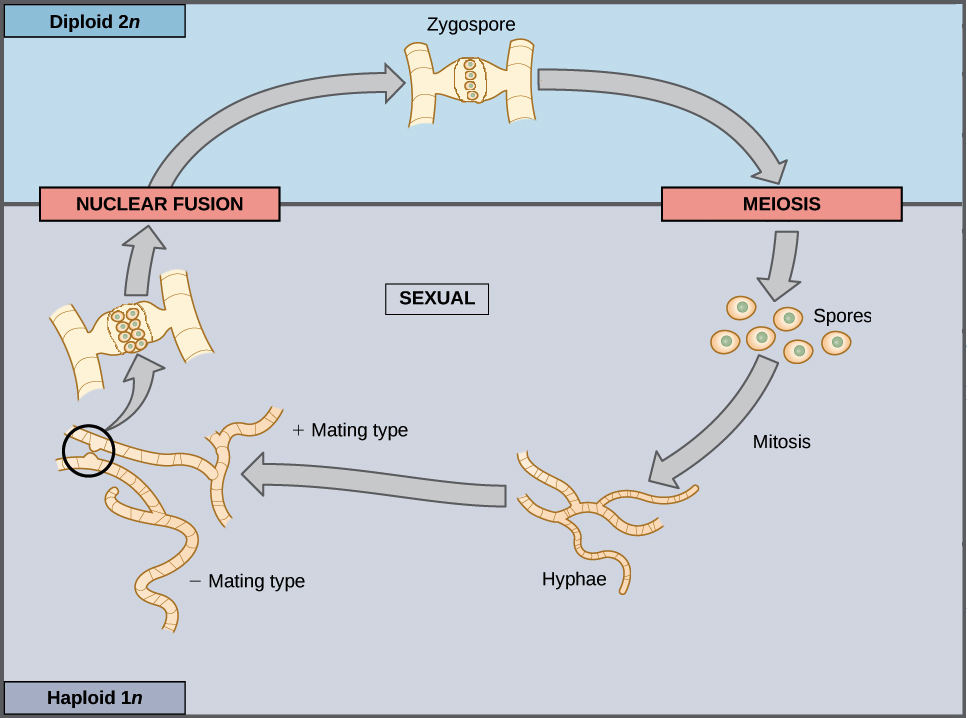fungi life cycle explained
When the mycelium grows and develops it might encounter another fungi. Two different mating types represented as type and type are involved.
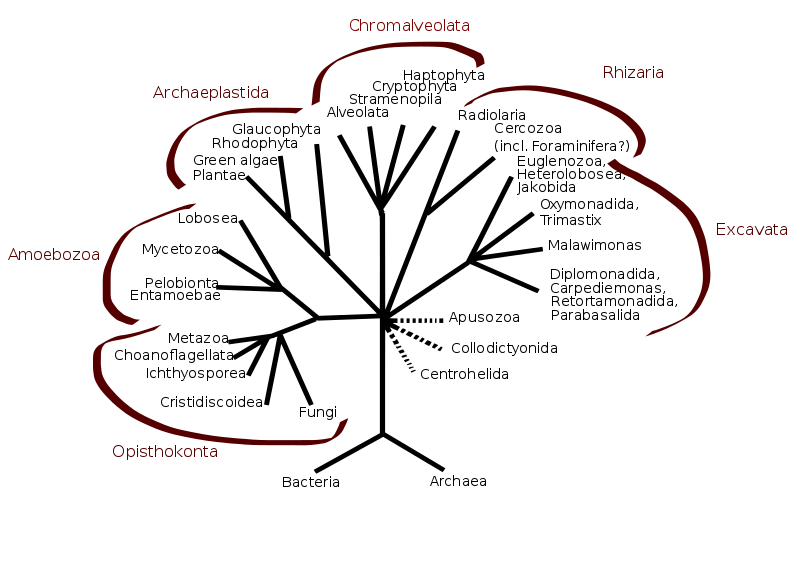
Intro To The Fungi Life Cycle Plantsnap
Fungi store their food in the form of starch.
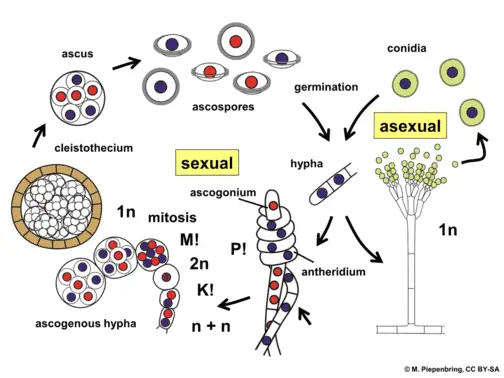
. Dimorphic fungi can define as a type of fungi which has a dual life cycle. Fungal life cycles spores and more. The fusion of hyphae is called plasmogamy.
Describe the symbiotic relationship of fungi with plants and pathological relationships with other organisms. Haploid fungi form hyphae that have gametes at the tips. Fungal life cycles are unique and complex.
The life cycle of a mushroom begins and ends through five stages of evolutionary phases beginning as a fungal spore seeds and completing its cycle as a mature fruiting body the part of a mushroom we all identify and know that releases new spores to create a new cycle all over again. When a spore lands on favorable real estate depending upon the species this might be a slice of bread a fallen log or a pile of leaves it sends out a thin hair-like tube called a hypha plural hyphae. As part of their life cycle fungi produce spores.
Bryophytes and Pteridophytes show an intermediate condition called the haplo-diplontic life cycle where phases are multicellular. The conidia are developed from the ascospores. In this electron micrograph of a mushroom gill the four spores produced by meiosis seen in the center of this picture are carried on a clublike sporangium visible to the left and right.
The stage during which a fungus reproduces asexually is known as asexual stage or asexual cycle or conidial stage or imperfect stage. Some fungi do plasmogamy but delay karyogamy forming cells that each have two separate haploid nuclei. These hyphae are called dikaryotic example of fungal life cycle with dikaryotic hyphae.
3 Nuclear fusion Karyogamy. They do take nutrients that are no longer being used and move them to places where they are needed. 4 and 5 Meiosis.
The zygote is actually a diploid cell created by the fusion of the two haploid sex cells. This is the first stage in the life cycle of a fungus. In reality there are many sub-steps of the process.
Haploid fungi form hyphae that have gametes at the tips. Asexual reproduction takes place by uninucleate thin-walled spores which are referred to as conidia. The hypha secretes enzymes that break down the chosen food source.
The fused hyphae containing haploid nuclei from two individuals is heterokaryotic. Meiosis reduction division restores the haploid number of chromosomes and initiates the. In the life cycle of a sexually reproducing fungus a haploid phase alternates with a diploid phase.
They may be unicellular or filamentous. The Life Cycle of Fungi. Therefore dimorphic fungi possess two kinds of.
But this model provides a good overview in terms of how fungi grows from birth to death. Fungi exhibit the phenomenon of alternation of generation. When fungi associate with plants and animals the fungi can donate water minerals or nutrients in exchange for the energy the calories they need to grow.
These are called sporangiophores. Explain ecosystem services of fungi and human nutrition applications. All fungi start as haploid spores.
Organisms that have a haploid life cycle include most fungi with dikaryotic phase algae without dikaryotic phase and male ants and bees. Mushroom dikaryotic mycelium is major phase only when mushroom is formed does karyogamy occur followed by meiosis. Fungi exist primarily as filamentous dikaryotic organisms.
Fungi are eukaryotic organisms and include yeasts moulds and mushrooms. The haploid phase ends with nuclear fusion while the diploid phase starts with the formation of the zygote. Does bryophytes show diplontic life cycle.
Their tips swell to produce a sporangium. Fungi are eukaryotic non-vascular non-motile and heterotrophic organisms. Two different mating types represented as type and type are involved.
The haploid phase ends with nuclear fusion and the diploid phase begins with the formation of the zygote the diploid cell resulting from fusion of two haploid sex cells. Fungi lack chlorophyll and hence cannot perform photosynthesis. Fungi can reproduce asexually by budding and many also have sexual reproduction and form fruitbodies.
Under favourable climatic conditions the asexual stage may be repeated resulting in the production of conidia in profuse quantities. B Basidiospore formation by Filobasidiella neoformans sexual state of Cryptococcus neoformans. Most fungi are microscopic but many produce the visible fruitbodies we call mushrooms.
Identify and describe the key adaptations unique to fungi cell walls made of chitin and external digestion including morphological life cycle and metabolic traits. We can understand the meaning of the term dimorphic just by breaking it into two in which Di means two and Morphic means morphology or structure. If the two fungi are.
In general the life cycle involves the fusion of hyphae from two individuals forming a mycelium that contains haploid nuclei of both individuals. Some fungi are multicellular while others such as yeasts are unicellular. They reproduce by means of spores.
Life cycle of fungi. The mycelium in most species of Taphrina is annual but in some species it is perennial. Spore Haploid The spore phase is the initial stage of the fungal life cycle.
From these spores haploid hyphae grow and ramify and may give rise to asexual sporangia. After the fungi has become. Fungi reproduce sexually either through cross- or self-fertilization.
The ascospores produce conidia by budding. Mycelium Diploid At the point when the mycelium develops and creates it may encounter other fungi. A Life cycle of S cerevisiae.
Fungi Life Cycle Fungi start life as tiny spores. Fungi reproduce sexually either through cross- or self-fertilization. Speaking of the lifecycle of fungi in sexually reproducing organisms the haploid and diploid phases alternate.
Fungal life cycles are unique and complex. 1 and 2 Dikaryon formation. But that isnt all they do.
There are four basic steps in the life cycle of a fungi. All fungi begin their life cycle in this stage. Life Cycle of Fungi.

Life Cycles Of Fungi Biolympiads

Classifications Of Fungi Openstax Biology 2e
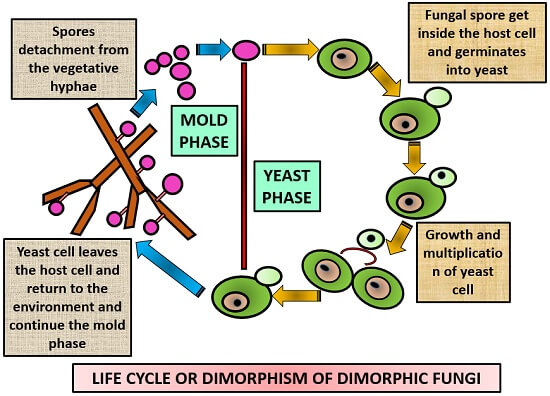
What Is Dimorphic Fungi Dimorphic Life Cycle Examples Transmission Biology Reader

Plasmogamy An Overview Sciencedirect Topics
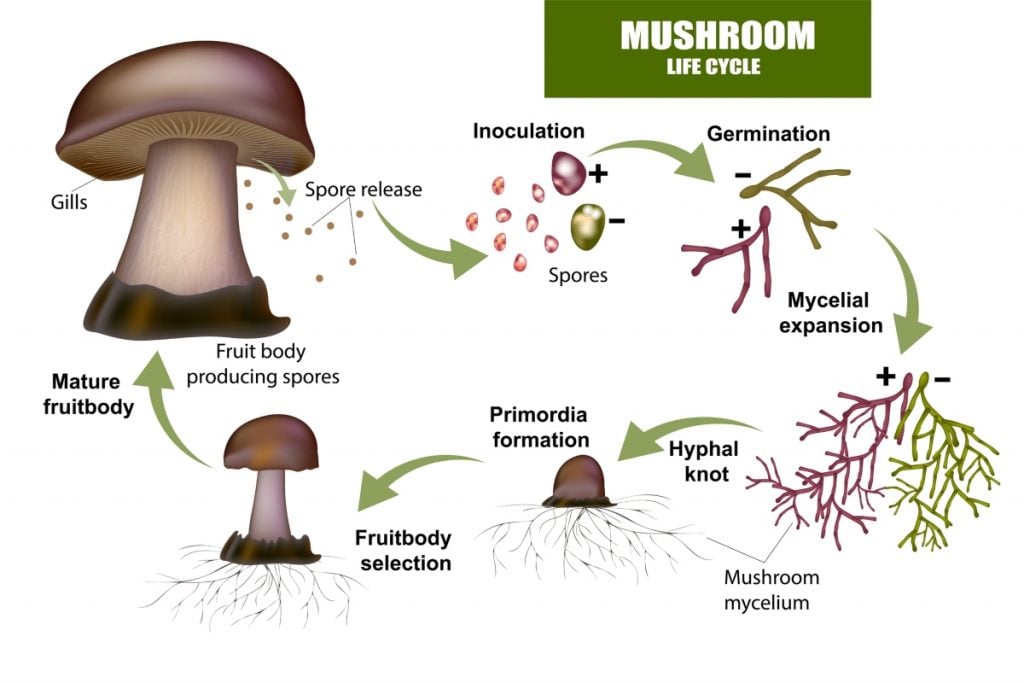
A Detailed Explanation Of The Mushroom Life Cycle Grocycle
Life Cycles Of Fungi Biolympiads

Life Cycle Of A Mushroom Worldkids

Basidiomycota Part 2 The Mushroom Life Cycle Youtube

Ascomycota The Sac Fungi Biology For Majors Ii

Characteristics Of Fungi Boundless Biology

Basidiomycota Life Cycle Study Com

Characteristics Of Fungi Openstax Biology 2e

The Allomyces Macrogynus Life Cycle The Sporophyte Generation Is Download Scientific Diagram

Fungi Explained Here Is What You Need To Know Microscope Clarity



